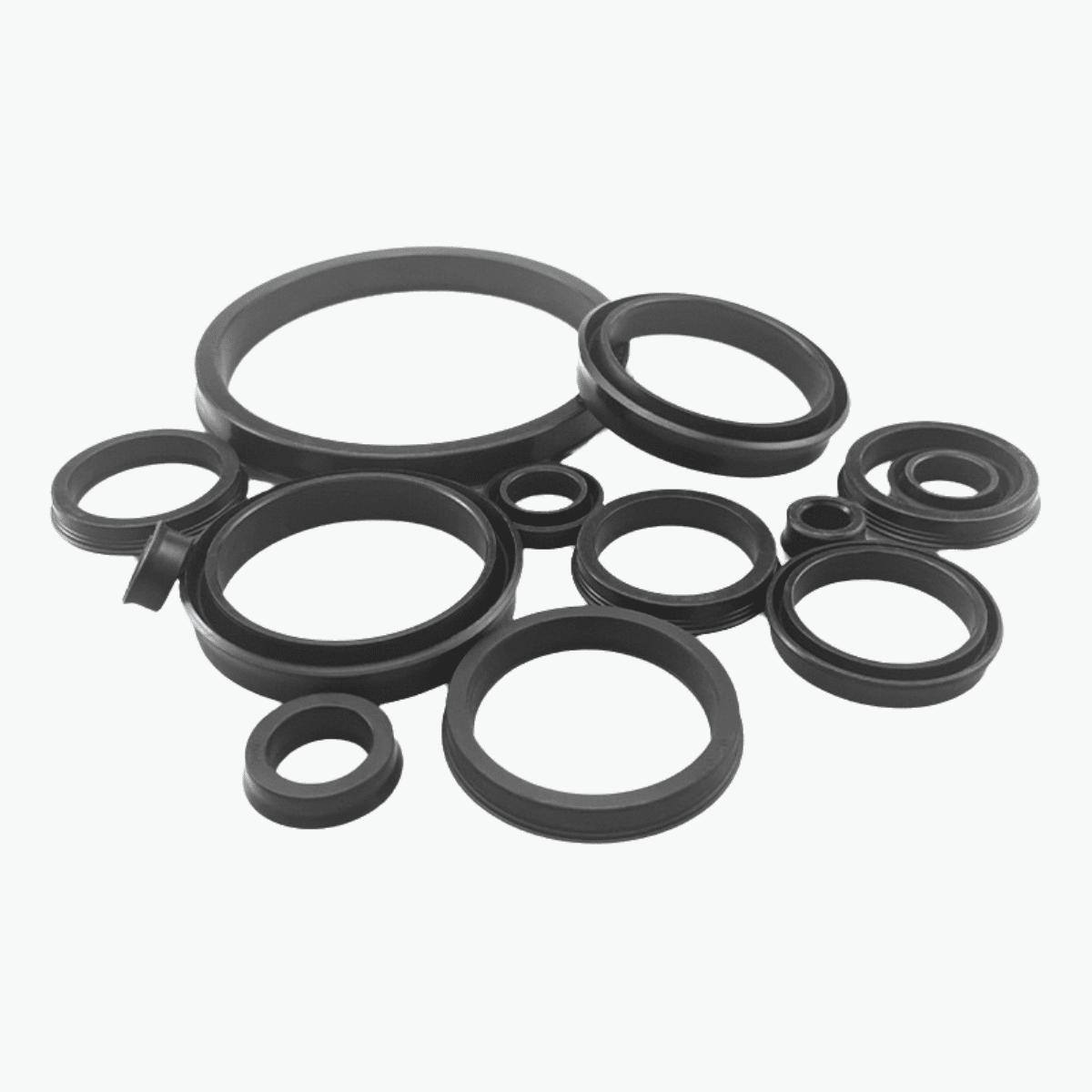Seal failure leads to leaks, downtime, and inefficiency—yet most are preventable.
Here are five common pneumatic seal issues and how to fix them with the right materials, techniques, and upgrades.

From material selection to maintenance tips, this guide helps you extend seal life and boost system performance.
Why Do Pneumatic Cylinder Seals Fail So Often?
Improper use or material mismatch is the root of most failures.
Worn seals, wrong sizing, or incorrect installation can lead to major pressure loss and poor efficiency. Understanding how seals degrade helps prevent downtime.

For an overview of pneumatic seal types and their roles, read the full pneumatic cylinder seals guide.
How Do You Fix Air Leakage Around the Rod or Piston?
Air leakage is the most common issue in pneumatic systems.
Cause:
- Guarnizioni del pistone o dello stelo usurate
- Installazione non corretta
- Using incompatible materials
Fixes:
- Replace seals with TPU or NBR rod seals
- Follow OEM install specs
- Use FKM or PTFE in high-temp/chemical systems
Why Do Seals Wear Out Prematurely?
Seals should last for thousands of cycles—when they don’t, something's wrong.
Cause:
- Dry operation or no lubrication
- Dust, dirt, or water contamination
- Incorrect sizing
Fixes:
- Apply synthetic seal-compatible lubricants
- Utilizzo guarnizioni tergicristallo antipolvere to block debris
- Size seals based on cylinder specs
For common size options, review our seal measurement guide.
What Causes Excessive Friction or Seal Hardening?
Too much friction increases energy use and shortens seal life.
Cause:
- Guarnizioni troppo strette
- Seal material not matched to environment
- Running dry without lubricant
Fixes:
- Switch to low-friction TPU or PTFE
- Aggiungere guarnizioni tampone for shock absorption
- Maintain with regular lubricant inspection
How Do You Fix Pressure Loss and Low Efficiency?
Loss of air pressure lowers cylinder response speed and accuracy.
Cause:
- Seal micro-leakage
- Bore wear
- Improper seal profile
Fixes:
- Upgrade to FKM or TPU materials
- Inspect bore and rod condition
- Use double-acting piston seals like Z8 or COP
For seal material behavior, check the pneumatic seal material guide.
What Causes Seal Swelling or Shrinking?
Temperature and chemical exposure can physically deform seals.
Cause:
- Non-compatible material
- Chemical swelling
- Thermal expansion
Fixes:
- Choose FKM or PTFE for high-temp/chemical resistance
- Avoid NBR in solvent-heavy systems
- Replace aged or brittle seals immediately
Where to Buy Reliable Pneumatic Seals?
Offriamo:
- Piston, rod, buffer & dust seals
- Materiali: NBR, TPU, FKM, PTFE
- OEM specs and custom options
📩 E-mail: [email protected]
📞 WhatsApp: +86 17622979498
Conclusione
Solve air leaks, wear, and pressure loss by choosing the right pneumatic seals and maintaining them properly.
Browse Related Guides
- How to Extend Pneumatic Seal Lifespan
- Piston Seal Types & Materials
- 5 Problems with Pneumatic Cylinder Seals


